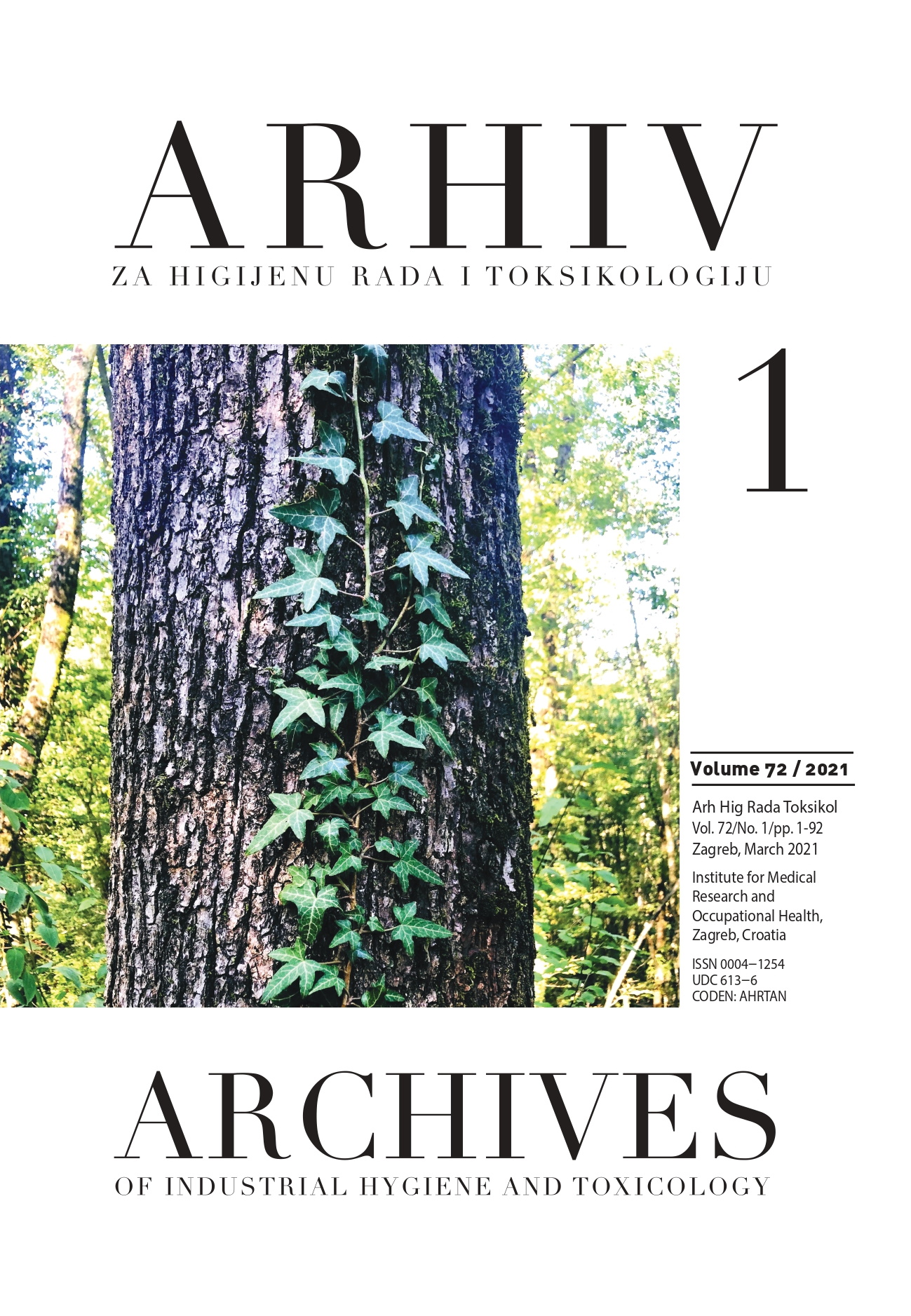Characteristics of work-related COVID-19 in Croatian healthcare workers: a preliminary report
DOI:
https://doi.org/10.2478/aiht-2021-72-3530Keywords:
comorbidity, hospitalisation, questionnaire, SARS-CoV-2, symptom clusteringAbstract
Healthcare workers (HCWs) are considered to run a higher occupational risk of becoming infected with severe acute respiratory syndrome coronavirus 2 (SARS-CoV-2), and develop coronavirus disease (COVID-19) than the rest of the population. The aim of this study was to describe and analyse the characteristics of work-related COVID-19 in Croatian HCWs. Study participants were HCWs who contacted their occupational physician between 1 May 2020 and 12 November 2020 with a request for the registration of COVID-19 as an occupational disease. All participants filled out our online Occupational COVID-19 in Healthcare Workers Questionnaire. The study included 59 HCWs (median age 45.0, interquartile range 36.0–56.0 years). Most (78 %) were nurses or laboratory technicians, and almost all (94.9 %) worked in hospitals. Hierarchical cluster analysis revealed three clusters of COVID-19-related symptoms: 1) elevated body temperature with general weakness and fatigue, 2) diarrhoea, and 3) headache, muscle and joint pain, anosmia, ageusia, and respiratory symptoms (nasal symptoms, burning throat, cough, dyspnoea, tachypnoea). Almost half (44.6 %) reported comorbidities. Only those with chronic pulmonary conditions were more often hospitalised than those without respiratory disorders (57.1 % vs. 2.5 %, respectively; P=0.001). Our findings suggest that work-related COVID-19 among Croatian HCWs is most common in hospital nurses/laboratory technicians and takes a mild form, with symptoms clustering around three clinical phenotypes: general symptoms of acute infection, specific symptoms including neurological (anosmia, ageusia) and respiratory symptoms, and diarrhoea as a separate symptom. They also support evidence from other studies that persons with chronic pulmonary conditions are at higher risk for developing severe forms of COVID-19.














